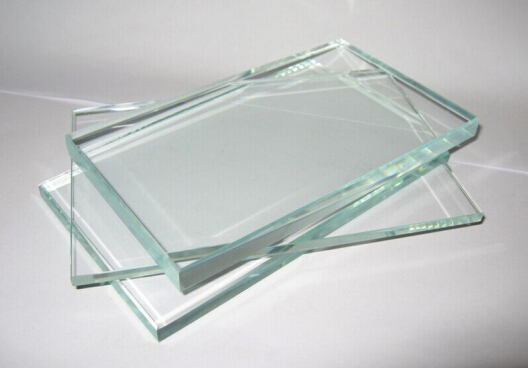

Tempered glass is a type of glass with compressive stress on its surface. Also known as reinforced glass. The use of tempering method to enhance glass began in France in 1874.
Tempered glass/tempered glass belongs to safety glass. Tempered glass is actually a type of prestressed glass. In order to improve the strength of glass, chemical or physical methods are usually used to form compressive stress on the surface of the glass. When the glass is subjected to external forces, the surface stress is first counteracted, thereby improving the load-bearing capacity and enhancing the glass's own resistance to wind pressure, heat and cold, impact, etc. Please distinguish it from fiberglass.
Preparation
Tempered glass is obtained by cutting ordinary annealed glass into the required size, heating it to around 700 degrees near the softening point, and then rapidly and uniformly cooling it (usually 5-6MM glass is heated at 700 degrees for about 240 seconds and cooled for about 150 seconds. 8-10MM glass is heated at 700 degrees for about 500 seconds and cooled for about 300 seconds. In short, the heating and cooling time varies depending on the thickness of the glass). After tempering treatment, uniform compressive stress is formed on the surface of the glass, while tensile stress is formed inside, which improves the bending and impact strength of the glass. Its strength is about four times that of ordinary annealed glass. Tempered glass that has been tempered must not be subjected to any cutting, grinding, or other processing or damaged, otherwise it will be shattered due to the disruption of uniform compressive stress balance.
Characteristics
Security
When glass is damaged by external forces, the fragments will form blunt edged small particles resembling honeycomb shapes, which are not likely to cause serious harm to the human body.
High intensity
Tempered glass of the same thickness has an impact strength that is 3 to 5 times that of ordinary glass, and a bending strength that is 3 to 5 times that of ordinary glass.
Thermal stability
Tempered glass has good thermal stability and can withstand a temperature difference three times that of ordinary glass, with a temperature variation of 300 ℃.
Advantages
Tempered glass
The first is that the strength is several times higher than that of ordinary glass, and it is resistant to bending.
The second is safety in use, as its increased load-bearing capacity improves its fragility. Even if tempered glass is damaged, it remains in small pieces without sharp angles, greatly reducing the harm to the human body. The rapid cooling and heating resistance of tempered glass is 3-5 times higher than that of ordinary glass, and it can generally withstand temperature differences of over 250 degrees, which has a significant effect on preventing thermal cracking. It is a type of safety glass. To ensure the safety of qualified materials for high-rise buildings.
Disadvantages
Disadvantages of tempered glass:
1. Tempered glass cannot be further cut or processed. It can only be processed to the desired shape before tempering.
Although tempered glass has stronger strength than ordinary glass, it has the possibility of self explosion (self rupture), while ordinary glass does not have the possibility of self explosion.
3. The surface of tempered glass may have unevenness (wind spots) and slight thinning of thickness. The reason for thinning is that after the glass is melted and softened, it is rapidly cooled by strong wind, which reduces the crystal gaps inside the glass and increases the pressure. Therefore, the glass is thinner after tempering than before tempering. Generally, 4-6mm glass becomes 0.2-0.8mm thinner after tempering, while 8-20mm glass becomes 0.9-1.8mm thinner after tempering. The specific degree depends on the equipment, which is also the reason why tempered glass cannot be used as a mirror.
4. Flat glass used in buildings that has been tempered through a tempering furnace (physical tempering) generally undergoes deformation, and the degree of deformation is determined by the equipment and technical personnel's process. To some extent, it affects the decorative effect (except for special needs).
Classification
By shape
1. Tempered glass is divided into flat tempered glass and curved tempered glass according to its shape.
There are generally twelve thicknesses of flat tempered glass, including 11, 12, 15, and 19mm; There are eight thicknesses of curved tempered glass, including 11, 15, and 19mm. The specific thickness after processing still depends on the equipment and technology of each manufacturer. But curved tempered glass has a maximum curvature limit for each thickness. The commonly known RR is radius.
2. Tempered glass is divided into flat tempered glass and curved tempered glass according to its appearance.
3. Tempered glass is divided into superior and qualified products according to its flatness. High quality tempered glass is used for car windshields; Qualified products are used for architectural decoration.
According to the process
1. Physical tempered glass is also known as quenched tempered glass. It is a process of heating ordinary flat glass in a heating furnace to a temperature close to the softening temperature of glass (600 ℃), eliminating internal stress through its own deformation, and then removing the glass from the heating furnace. Then, high-pressure cold air is blown towards both sides of the glass using a multi head nozzle to rapidly and uniformly cool it to room temperature, thus producing tempered glass. This type of glass is in a stress state of internal tension and external compression. Once local damage occurs, stress release occurs, and the glass is broken into countless small pieces. These small fragments have no sharp edges and are not easy to injure people.
2. Chemical tempered glass is strengthened by changing the chemical composition of the glass surface, usually using ion exchange method for tempering. The method is to immerse silicate glass containing alkali metal ions into molten lithium (Li+) salt, causing Na+or K+ions on the surface of the glass to exchange with Li+ions, forming a Li+ion exchange layer on the surface. Due to the smaller expansion coefficient of Li+compared to Na+and K+ions, the outer layer shrinks less and the inner layer shrinks more during the cooling process. When cooled to room temperature, the glass is also in a state of inner layer tension and outer layer compression, similar to the effect of physically tempered glass.
According to the degree of rigidity
1. Tempered glass: Tempering degree=2~4N/cm, surface stress of tempered glass for glass curtain walls is α ≥ 95Mpa;
2. Semi tempered glass: Tempering degree=2N/cm, surface stress of glass curtain wall semi tempered glass 24Mpa ≤ α ≤ 69Mpa;
3. Super tempered glass: Tempered degree>4N/cm.
Product application
Flat tempered glass and curved tempered glass belong to safety glass. Widely used in high-rise building doors and windows, glass curtain walls, indoor partition glass, daylighting ceilings, sightseeing elevator passages, furniture, glass guardrails, etc. Tempered glass can usually be applied in the following industries:
1. Architecture, building templates, decoration industry (e.g. doors, windows, curtain walls, interior decoration, etc.)
2. Furniture manufacturing industry (glass coffee tables, furniture accessories, etc.)
3. Home appliance manufacturing industry (products such as televisions, ovens, air conditioners, refrigerators, etc.)
4. Electronics and instrumentation industry (various digital products such as mobile phones, MP3 players, MP4 players, clocks, etc.)
5. Automotive manufacturing industry (such as car windshields)
⒍ Daily products industry (glass cutting board, etc.)
7. Special industries (military grade glass)
Due to the fact that tempered glass breaks into uniform small particles and does not have the typical sharp corners of glass knives, it is called safety glass and widely used in automobiles, interior decoration, and windows that open to the outside on high-rise buildings.



